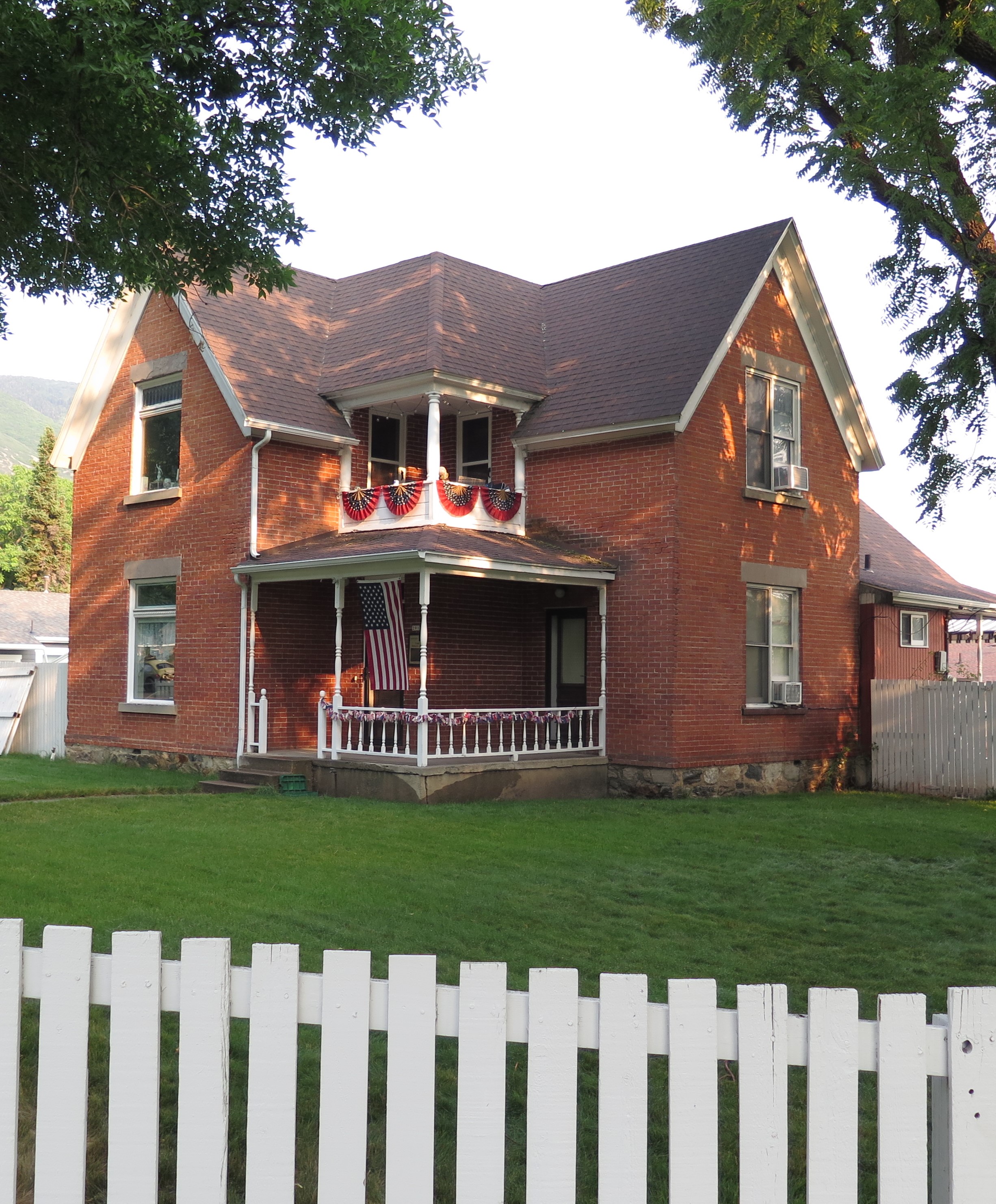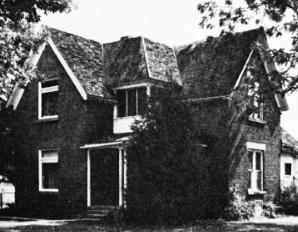
- Home
- History
- Map
- Links
Utah Division of State History National Register of Historic Places Farmington Main Street Historic District Website
- Index
Amasa Lyman and Alice Steed Clark House Annie Clark Tanner House Annie Clark Tanner Rental House Edward Franklin and Aureta Potter Clark House Eugene Henry and Sarah Anne Sessions Clark House Ezra T. Clark Monument Ezra Thompson and Mary Stevenson Clark House Ezra T. and Susan Leggett Clark House Historic Markers Hyrum Don Carlos and Eliza Porter Clark House Isaac and Lovisa Eldora Sears House John Leavitt/Timothy Baldwin and Lucy Rice Clark House Joseph Smith and Lucymaria Robinson Clark House James and Millie G. Millard House Nathan George and Esther Lauretta Ford Clark House Orson Richards and Lucile Barlow Clark House Thomas and Martha Sanders House Van and Barbara Swindle Bass House Verlene Rae Luken Fourplex Verlane Joy and August Jung House- Contact
Annie Clark Tanner House

Annie Clark Tanner House - 291 West State
National Register's Architecture Description "This Victorian Eclectic brick house, which rests on a stone foundation, was built in 1901. Upon first glance, the design appears to be a cross wing in plan with an engaged corner tower. However, further investigation reveals the plan is composed of a two-story central block with one and a half story projecting bays. The plan could also be considered a hybrid of the two plan types, both of which are found in the district. The focal point of the house is the corner tower which provides an entry hall and an open upper floor porch. It is wrapped on two sides by a hip-roof porch which is supported by turned wood posts. As shown in historic photos, the porch originally featured Tuscan columns which match the existing columns on the upper tower. Covered by a combination gable/truncated hip roof, the brick walls are pierced by windows which are emphasized with flat sandstone arches and sills. The projecting bay, which features a gable roof, is highlighted by two large fixed windows with leaded glass transoms. Other windows in the house are one-over-one double hung assemblies which are paired on the flanking gable roof bay."
History 
Annie Clark Tanner home in 1940's - Farmington, Utah Annie Clark Tanner was the only female child of Mormon pioneer Ezra T. Clark to build a home in the district. She was the oldest daughter and second child of 10 in the family of Ezra T. Clark's second wife in polygamy, Susan Leggett.
Annie used money from her father's estate, which he bestowed on his children before his death, to pay for the home's construction. The home was completed in 1901, the year her father died at 77. In her autobiography, Annie wrote that she acted as general contractor, a rather unusual circumstance for a woman at that time : My father seemed quite pleased to see me drive off to secure materials at the brick kiln in Kaysville, six miles to the north....After arranging for the bricks, I went to Centerville, a little town four miles to the south, and hired a rock mason to put in the foundation. I had to buy the lumber and hardware and also arrange for the carpenters and even the planning of the house was under my direction
Annie is perhaps best known for her autobiography, A Mormon Mother, which has been called by historians a "classic in Mormon literature." It is a steady seller at Deseret Book. It shows up on many book-group reading lists because of her frank and personal observations about polygamy and living on the "underground" after the LDS Church "Manifesto" renounced the practice in 1890. She also wrote her mother's and father's biographies.
Many people know Annie as the mother of the late philosopher, philanthropist, author and University of Utah Professor O.C. Tanner, who made a fortune "moonlighting" in the jewelry business in Salt Lake City. Obert, the last of Annie's 10 children, was born in the State Street home in 1904 and is buried next to Annie in the Farmington Cemetery.
Annie's Farmington home was her pride and security as she endured much personal strife. Her polygamous husband, Joseph Marion Tanner, squandered most of her inheritance and left her destitute in 1913 with eight children (two died in early childhood). Joseph Tanner asked her to sell her home to help finance his farm in Canada, but she refused. She built a rental house next door and rented rooms in the main house to famous orchestra musicians employed at Lagoon. She worked for neighbors - washing, scrubbing floors for 15 cents an hour to help her children to receive an education. Six of her children received a college education, including O.C. Tanner.
Annie never did sell the house. Once the children were grown, she moved to Salt Lake City to be closer to some of them and rented the Farmington home. The house passed to relatives upon her death in 1942.


- Index